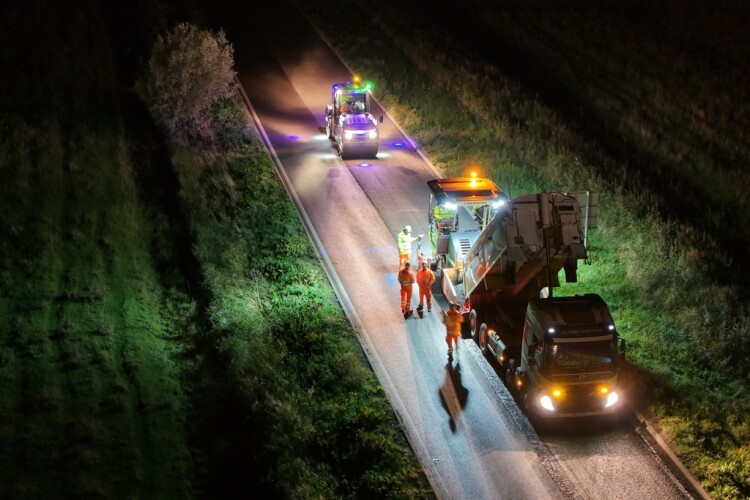This post was originally published on this site
https://www.theconstructionindex.co.uk/assets/news_articles/2025/11/1762501534_a47-resurfacing.jpgNational Highways challenged contractors Heidelberg Materials and WSP to resurface the A47 between Acle and Great Yarmouth in a low carbon way.
The result is a new structural layer of the road that’s made from more than 90% recycled materials, laid using battery-powered machinery.
With a recycling plant close to site, the project is predicted to save 400 tonnes of CO2 compared to traditional methods.
National Highways project manager Alice Grandidge said: “We know that good quality roads are important to the millions of drivers that use our network each day. This scheme presented the ideal opportunity to resurface a road effectively but in a low carbon way – from the materials we use, where we sourced it from, how we mixed it and when we work on it. All these aspects combined together save carbon compared to a traditional approach to a road resurfacing scheme – it makes it one of the greenest major road resurfacing and is a major step towards carbon zero highways.”
Scott Cooper, managing director of contracting at Heidelberg Materials UK, said: “This scheme is a great example of the effectiveness of supply chain collaboration in driving carbon reduction measures.
“The change in design specification to use EvoBuild foamed asphalt resulted in a dramatic increase in recycled content and provided substantial savings in CO₂ emissions compared with using hot mix asphalt as its production requires significantly less energy.

“The addition of the extensive use of electrified plant demonstrated what the future of road laying could look like. The project is an excellent example of sustainable highway construction in practice.”
WSP technical director Dermott Doyle said: “Delivering infrastructure that balances operational excellence with low carbon impact is a key priority for WSP. On the A47 project, we worked closely with National Highways and Heidelberg Materials to design a major pavement intervention that maximises recycled content and reduces carbon emissions, demonstrating how sustainable practices can be integrated into everyday road construction.”
Ms Grandidge added that this demonstration could be replicated on other roads but not all.
She said: “Road surface types are determined by traffic usage so such a surface would potentially not be suitable on a more busy road such as the A1. However, many lessons can be learnt from this that can be replicated in some other areas across the country. It is an example of how we need to adapt to meet carbon zero targets and work in a greener way.”
Work started on the road in May and completes this month, with all work being carried out overnight.
Got a story? Email [email protected]


